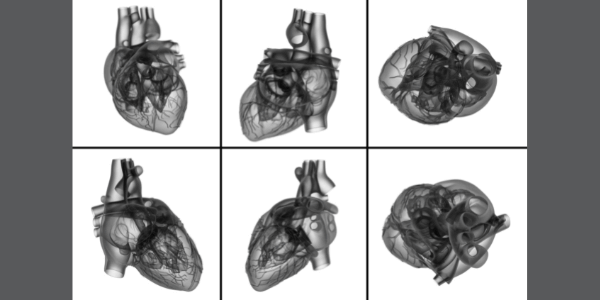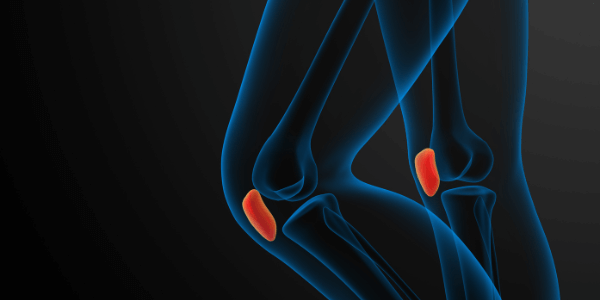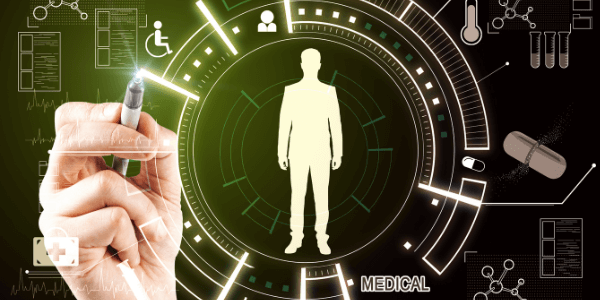Hi! I’m June. When I tell people that I’m a graphic designer, a common response is “Cool! How fun!” Indeed, it is. I won’t say otherwise. However, the coolest job on my list is a medical illustrator.
A medical illustrator isn’t exactly the same as other illustrators, because it requires more knowledge and professional skills. In other words, it’s a very specific job that can’t be replaced easily. Let’s say, it’s a more “serious” job and you should have a talent for both art and science.
Don’t get me wrong, all illustrator jobs are serious, but you’ll get what I mean as I explain what a medical illustrator is, including some job routines.
This article will cover what a medical illustrator does, essential skills, and steps for becoming a medical illustrator.
Table of Contents
What is a Medical Illustrator
A medical illustrator is a professional artist who works with scientists or researchers to create medical imagery to educate and explain biological processes.
Medical illustrations are used in lectures, textbooks (remember your biology books?), hospital posters, medical journals, etc.
Many medical illustrators work in research labs, health centers, and hospitals, so it’s a creative career that requires a science background, that’s why I said it’s specific and often unreplaceable by let’s say a normal illustrator.

Some medical illustrators specialized in making 3D modeling and animations. In this case, software skill is a must.
There are also self-employed medical illustrators who own biomedical companies, publishing companies, etc. Others prefer to work as freelance illustrators because they have more freedom and flexibility.
Both freelance and self-employed medical illustrators should have some business and marketing skills in order to get clients.
6 Essential Skills That a Medical Illustrator Should Have
Being a medical illustrator isn’t only about drawing skills. It’s also important to have other skills like creativity, interpersonal skills, science background, detail-oriented, and software skills. I’ll explain further why it’s important to have these six skills.
1. Drawing skill
Drawing skill is important because that’s what you do as an illustrator. It doesn’t matter if you’re doing digital or print illustrations, you need to know how to draw. For medical illustrators, digital drawing is more common.

Medical illustrations are often very detailed and require precision. Drawing on design software isn’t as flexible as drawing with pen and paper, so you’ll need drawing tablets.
Depending on your career choice, some medical illustrator needs to create 3D illustrations, which can be more challenging, thus, taking a long time to practice.
2. Creativity
Although medical illustrations often look pretty straightforward, it still requires creativity. The best example is that you need to think about how to create an easy-to-understand illustration. That’s brainstorming work!

Therefore, medical illustrators should be creative in art and communication. Not all medical illustrations have to be “serious”, especially if you’re working for publications or ad agencies. And if you want to create 3D modeling, creativity in visualization is even more important.
3. Science background
You’re working in the biomedical field, so it’s definitely important to have certain knowledge about science such as human or animal anatomy.
You don’t have to be an expert, but at least you should know what the researchers or scientists are talking about. Otherwise, it’s almost impossible to understand what your task is.
4. Interpersonal skills
Medical illustrators partner with doctors, researchers, and scientists, so being able to understand and visualize concepts is the key.
You must be a good listener and communicator. It’s also important to have good comprehension skills because you need to understand who you work with, in order to create the correct illustrations.
Sometimes you may need to explain the illustrations to patients, so being a good communicator is essential.
5. Sofware skills
For other types of illustrators, mastering graphic design isn’t a strict requirement, but as a medical illustrator, you must know how to use design software. You do need to know graphic design, even 3D design, and animation as a medical illustrator.

Depending on the career direction, if you create anatomy illustrations for medical publications, using a vector-based program such as Adobe Illustrator should be enough. If you work to create sculptured anatomical models, you will need to use other 3D design tools.
6. Detail-oriented
Although medical illustration is art, it has to be precise because science needs to be specific, and details matter. It’s important to draw and present anatomical features and medical conditions.
How to Become a Medical Illustrator (4 Steps)
If you’re considering medical illustration as a professional career, follow the steps below to get yourself ready.

Step 1: Get a degree or training certificate
As I mentioned above, a medical illustrator isn’t exactly the same as other illustrators. In this case, a degree or certificate is somehow important because medical illustration is a very specific field and it involves science too. So you should look into a medical illustration course.
The majority of medical illustrators have a master’s degree in medical illustration. You’ll be learning both biological science and art practice/theory.
Step 2: Decide a career direction
Even though it’s a very niche market, there are still different types of jobs for medical illustrators. You might want to ask yourself, do you like 2D or 3D, graphic or motion? Where do you want to work, hospital, lab, or publishing companies/agencies?
Having a direct clear can help you better create a portfolio that can stand out in a specific field.
Step 3: Create a portfolio
Just saying how great you are on your CV isn’t going to get you a job in this field. You must show your work! To be honest, Steps 2 and 3 are closely related because your portfolio should show what you want to do in the future.
Your portfolio should show how you applied your artistic skills to real work. Note that a good-looking illustration isn’t enough, your artwork must show its purpose.
Step 4: Find a job
A medical illustrator isn’t such a common job as a graphic designer as you can see in most job listings. So where do medical illustrators look for jobs?
Although there is a demand, it’s still a very niche career so you probably don’t see a lot of positions on general job hunting sites like indeed.com or monster.com. Instead, a better idea would be to reach out to experts in the field.
For example, the Association of Medical Illustrators has some job listings, or you can reach out to researchers, publishing companies, etc.
FAQs
Want to learn more about the medical illustration field? You might be interested in the questions below.
Is there a demand for medical illustrators?
Yes, there is a demand for medical illustrators. According to the U.S. Bureau of Labor Statistics, Careers in the fine art industry will remain stable and the medical science field is expecting a 6% of growth.
Association of Medical Illustrators, the fast-growing fields of work for the medical illustrator are computer modeling, animation, and interactive design, all of which are in high demand in a wide variety of markets, and which often require larger teams of individuals.
Do medical illustrators make good money?
Yes, medical illustrators can make good money. According to the Association of Medical Illustrators, the median salary for a medical illustrator in the U.S. is $70,650 and can range up to $173,000.
How many hours does a medical illustrator work?
Just like every other career, the regular work schedule for a medical illustrator is 40 hours per week, nine to five basis. Freelance medical illustrators decide their own working hours.
Where do medical illustrators work?
Besides working at research/health centers or medical schools, medical illustrators can also work in publishing companies, medical education companies, biotech companies, etc.
Conclusion
If you want to become a medical illustrator, besides your creativity and illustration skill, it’s important to have a science background, because you are somehow working in the medical field as well.
Still not sure if medical illustration is the career for you? Honestly, it’s easy to find out. Just ask yourself a question: Are you passionate about art and science? If the answer is yes, why not give it a try?
About June Escalada
Irina Savu
Hello. My name is Irina Savu. Ive graduated medicine school and always been interested in illustrations and anatomy but in the country i live in, Romania, theres no specialty for medical illustration, is there a way to do a course online or do i necesarry need an acredited course to prove my skill is worth? I wished i could work as a freelancer but im afraid people wouldnt consider collaborating with me because i dont have an official degree in medical illustration . Thank you so much for sharing all these informations online its a relief to be able to find so many important information that coild possibly change someones career.
June Escalada
Hi Irina,
You can definitely start taking online illustration courses and get a certificate. You could begin as a freelancer just to see if that’s really what you want to do? Also, working as a freelancer, there’s the problem of unstable income. If that isn’t your concern, feel free to give it a try 🙂
Good luck!
Byakatonda Amos
Hello am Byakatonda Amos aka Bamos a student doing Bacholer ‘s degree in industrial art and design during the course we learnt about anatomy and drawing illustrations , sculptures does it make me a medical illustrator
June Escalada
Hey there!
Are you interested in being a medical illustrator?
eliot
Hello, my name is Elliot and I’ve graduated as Graphic designer and I have a certificate of UX/UI design, I’m interested in the medical illustration degree but I’m required for a science courses to do the masters in canada.
DO you have any suggestion for courses I can take that can be accredited to do the masters? or you can tell me another path.?
Thank you
June Escalada
Hi Eliot, are you looking for a master’s in Medical Illustration?
Eliot
Hi June,
Yes I’m looking for a master degree since i have a background of design and I took some science courses to refresh my memory. Do you have any suggestions? Thank you
June Escalada
Hi Eliot, see if this article from the Association of Medical Illustrators helps 🙂
https://ami.org/medical-illustration/enter-the-profession/education